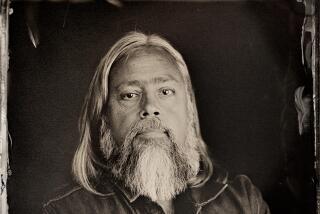The Cupeños’ own Trail of Tears
- Share via
The history of the Pala Band of Mission Indians begins with an event so traumatic that it is known as the Cupeño Trail of Tears. It remains so central to tribal members, they memorialize it in the entryway of the building that has come to symbolize the tribe’s modern prosperity: a casino off Interstate 15 in northern San Diego County.
In 1903, U.S. officials forced hundreds of Cupeño Indians, at gunpoint, to move their household possessions, wagons and livestock from their longtime home in what was then called San Jose del Valle, now Warner Springs. A court had ruled that the tribe did not own the land that it had occupied for generations; the new owner had dreams of a resort.
The tribe was herded around Mt. Palomar to a spot beside a Catholic mission in the San Luis Rey River Valley. During the 40-mile forced march, women and children were terrified.
When tribe members arrived at their new home, they found “nothing but tents and the rundown mission,” according to the casino display. At the insistence of the Bureau of Indian Affairs, the Cupeño tribe melded with the Luiseño tribe that lived nearby — creating the modern Pala Band of Mission Indians.
Under the hand of the Bureau of Indian Affairs, the two groups existed side by side despite occasional rivalries. To this day, descendants of the Luiseño pioneers prefer one cemetery, descendants of the early Cupeño largely prefer another.
One of the survivors of the forced march was Margarita Britten. She was an expert in basket weaving; she and her husband had seven children. At Pala, she became a tribal elder.
The disenrollment controversy involves a decision by the Pala governing board that Britten’s father was not an Indian and thus she was not a full-blooded Cupeño. In all, 162 of her descendants have been cut off from sharing in the tribe’s profits from its casino, hotel and other business ventures.
Britten’s relatives note that the Bureau of Indian Affairs has repeatedly ruled that Britten was a full-blooded Cupeño. And they say it is unfair to expect her descendants to have documents such as birth certificates or marriage licenses that predate the relocation.
Tribal members who have been disenrolled have made plaintive appeals to the Bureau of Indian Affairs, although the agency does not have the authority to overrule the Pala board. Says one appeal:
“Indian ancestry is a priceless personal truth, central to identity, culture and community. It is rooted in individual biology and being, inalterable by the whims of others. Ancestry is not a political status to be erased with the stroke of a pen.”
More to Read
Sign up for Essential California
The most important California stories and recommendations in your inbox every morning.
You may occasionally receive promotional content from the Los Angeles Times.










